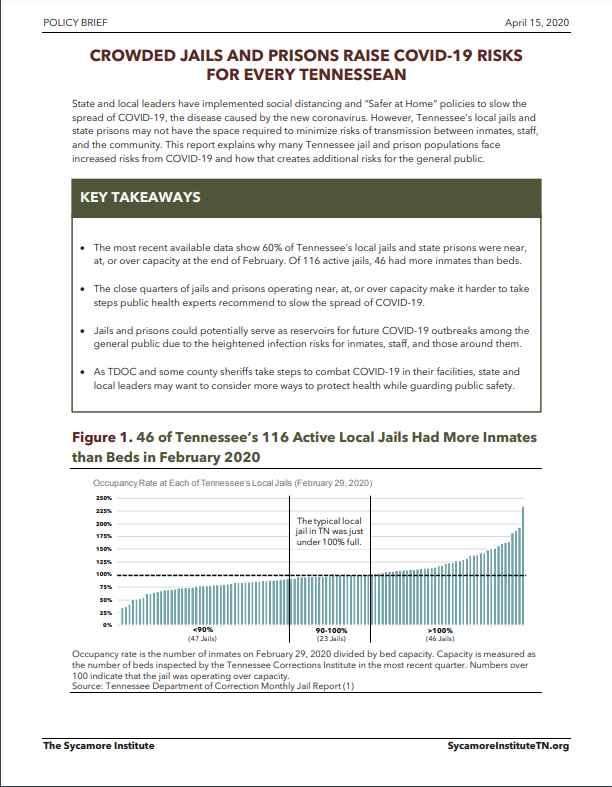Crowded Jails and Prisons Raise COVID-19 Risks for Every Tennessean
By Bryce Tuggle
State and local leaders have implemented social distancing and “Safer at Home” policies to slow the spread of COVID-19, the disease caused by the new coronavirus. However, Tennessee’s local jails and state prisons may not have the space required to minimize risks of transmission between inmates, staff, and the community. This report explains why many Tennessee jail and prison populations face increased risks from COVID-19 and how that creates additional risks for the general public. Figure 1. 46 of Tennessee’s 116 Active Local Jails Had More Inmates than Beds in February 2020 Occupancy rate is the number of inmates on February 29, 2020 divided by bed capacity. Capacity is measured as the number of beds inspected by the Tennessee Corrections Institute in the most recent quarter. Numbers over 100 indicate that the jail was operating over capacity. Source: Tennessee Department of Correction Monthly Jail Report
KEY TAKEAWAYS
The most recent available data show 60% of Tennessee’s local jails and state prisons were near, at, or over capacity at the end of February. Of 116 active jails, 46 had more inmates than beds.
The close quarters of jails and prisons operating near, at, or over capacity make it harder to take steps public health experts recommend to slow the spread of COVID-19.
Jails and prisons could potentially serve as reservoirs for future COVID-19 outbreaks among the general public due to the heightened infection risks for inmates, staff, and those around them.
As TDOC and some county sheriffs take steps to combat COVID-19 in their facilities, state and local leaders may want to consider more ways to protect health while guarding public safety
Nashville: The Sycamore Institute, 2020. 9p.


